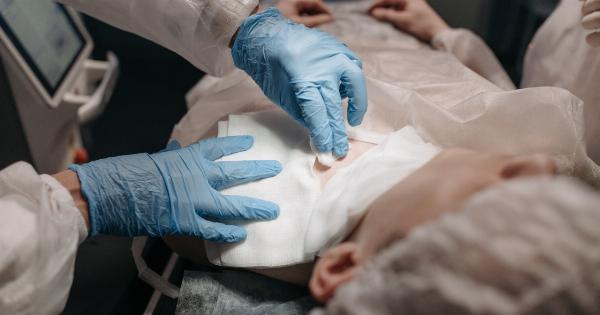Arthritis and other joint diseases affecting the knee joint can greatly impact our quality of life. For these conditions, knee arthroplasty, or a knee replacement surgery, can help relieve pain, improve mobility and restore function.
In the last few years, there has been some significant advances in knee arthroplasty surgery, leading to better outcomes for patients.
Patient-specific knee implants
Traditionally, knee implants came in limited shapes and sizes. However, with the advancements in technology, 3D printing technology has enabled the creation of patient-specific knee implants.
These implants are designed specifically for an individual patient’s unique anatomy, taking into account the gender, weight, and age of the patient. Patient-specific implants help improve the fit of the implant, reduce the risk of misalignment and dislocation, and improve the overall longevity of the implant.
Robot-assisted knee arthroplasty
Robotic technology has brought significant advances to knee arthroplasty. By using a computerized model of the patient’s anatomy, the system allows surgeons to create a three-dimensional plan of the implant’s placement before the surgery.
During the surgery, the robot guides the surgeon using a series of visual cues, helping with the precision, accuracy, and safety of the procedure. Robot-assisted knee arthroplasty has shown to have a better accuracy rate and can facilitate quicker recovery and better outcomes.
Implant coatings
One of the most significant developments in knee arthroplasty is the advancement of implant coatings- a layer of material applied on top of the joint surface to improve durability and longevity.
In recent years, research has led to the development of a wide range of coatings, which can help improve the lifespan of the implant. These coatings help protect the implant from wear, tear, and corrosion from the fluids within the knee joint, helping improve the implant’s life and reduce the need for revision surgeries.
Minimally invasive knee surgery
Minimally invasive surgery (MIS) is a technique that minimizes the size of the incision in knee surgery to facilitate faster recovery and reduce the incidence of infection.
In the past few years, MIS techniques have advanced significantly, enabling knee arthroplasty with a smaller incision. With minimally invasive surgery, the surgeon can access the joint through small incisions, using specialized instruments, which leads to less pain, blood loss, and infection risk compared to traditional open surgery.
Navigated bi-cruciate retaining knee arthroplasty
With the advent of computer-aided navigation, knee arthroplasty has become more precise and efficient than ever. Navigated bi-cruciate retaining knee arthroplasty is a newer technique that is gaining popularity.
This technique helps retain the cruciate ligaments, which helps maintain the natural bending and twisting motion of the knee. Navigation technology allows the surgeon to place the implant more accurately, with fewer chances of errors, resulting in better-long-term functionality of the implant.
Customized implants for patients with complex knee issues
Some patients have complex knee problems that require customized implants. In recent years, advances in technology have enabled the creation of implants that can customize for individuals with unusual anatomy or deformities.
These customized implants can help the surgeon better match the implant to the patient’s anatomy, providing better outcomes and reducing the need for revision surgery.
Growing advances for revision knee replacement
Revision knee replacement is a surgery performed to repair or replace a previously placed implant that has failed or worn out.
In recent years, advances in technology have enabled better revision implant design, especially for patients who require a replacement after a failed surgery. The newer generation of revision implants has more advanced coatings and implant-implant interfaces that promote proper fixation and alignment.
These advancements can lead to a higher success rate for revision surgeries and improved outcomes for those who require them.
Patient-specific knee cartilage regeneration
Cartilage regeneration is a newer approach to repair damaged cartilage without the need for a knee replacement.
The treatment involves harvesting a small sample of cartilage from the patient’s knee, growing the new cartilage cells in a laboratory, and then implanting them in the knee joint. Recent advances in technology have enabled more customized cartilage regeneration.
The treatment is particularly helpful for younger patients or those with localized cartilage damage, as it can help them avoid the need for a total knee replacement while restoring function and reducing pain.
Robotic and computer-assisted surgery
In addition to navigated bi-cruciate retaining, there are several other types of robotic and computer-assisted surgery procedures. These methods give surgeons more control, improve accuracy, and have significantly reduced risks for error.
Computer-assisted surgery uses a digital model of the patient’s knee to determine how the surgery procedure should be done. Robotic surgery incorporates robotic arms that are moved by the surgeon to make precise cuts. Both of these innovative techniques provide numerous benefits for knee arthroplasty, including increased precision and less surgical risk.
Outlook
The advancements in knee arthroplasty surgeries have been promising, and ongoing research in technology and materials is likely to lead to further enhancements.
Many contemporary techniques are being used to give patients lasting relief from knee pain and restore their range of motion. For patients with knee pain, it is essential to consult with a qualified doctor to determine which of the newer knee procedures may be right for them.


























